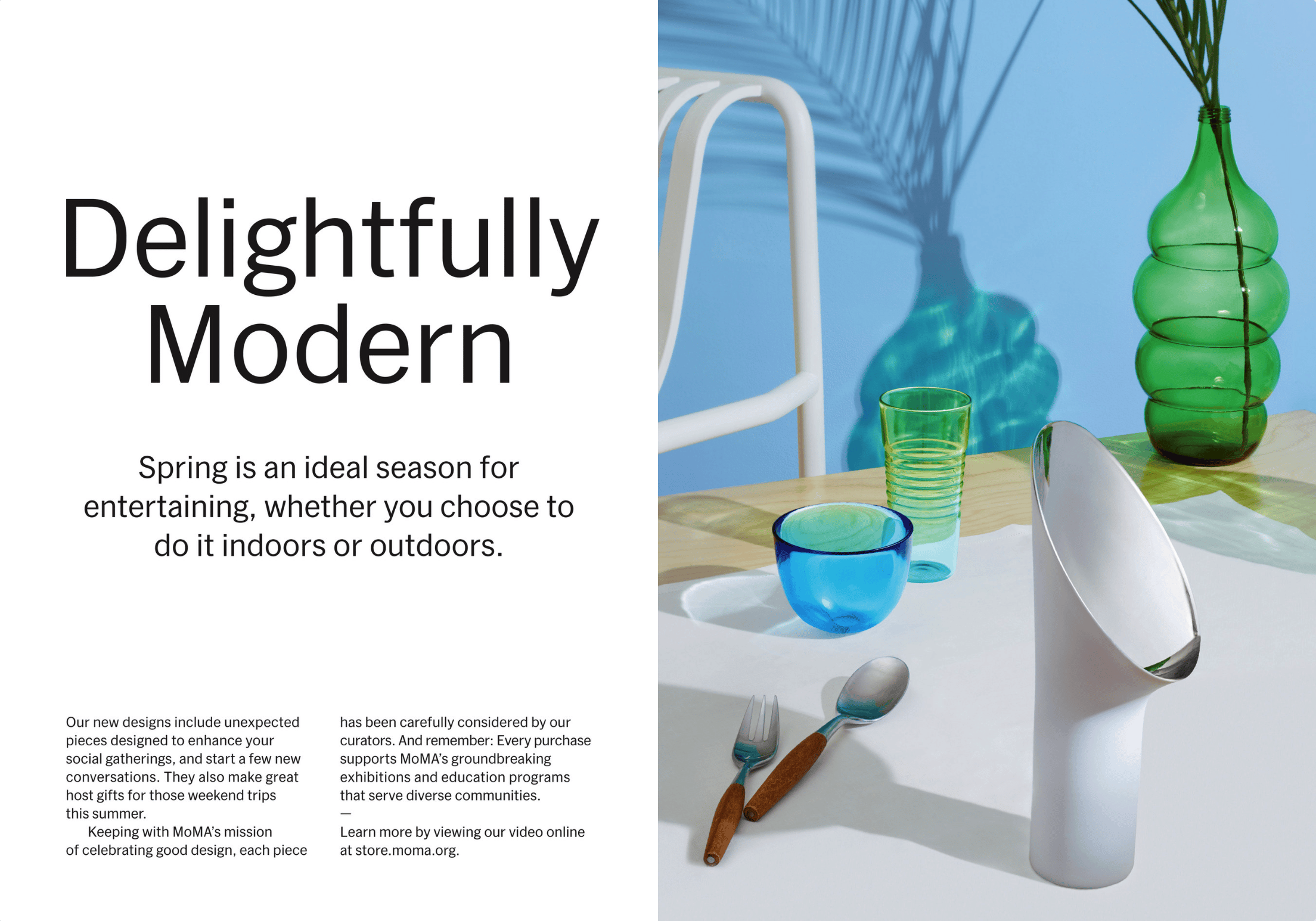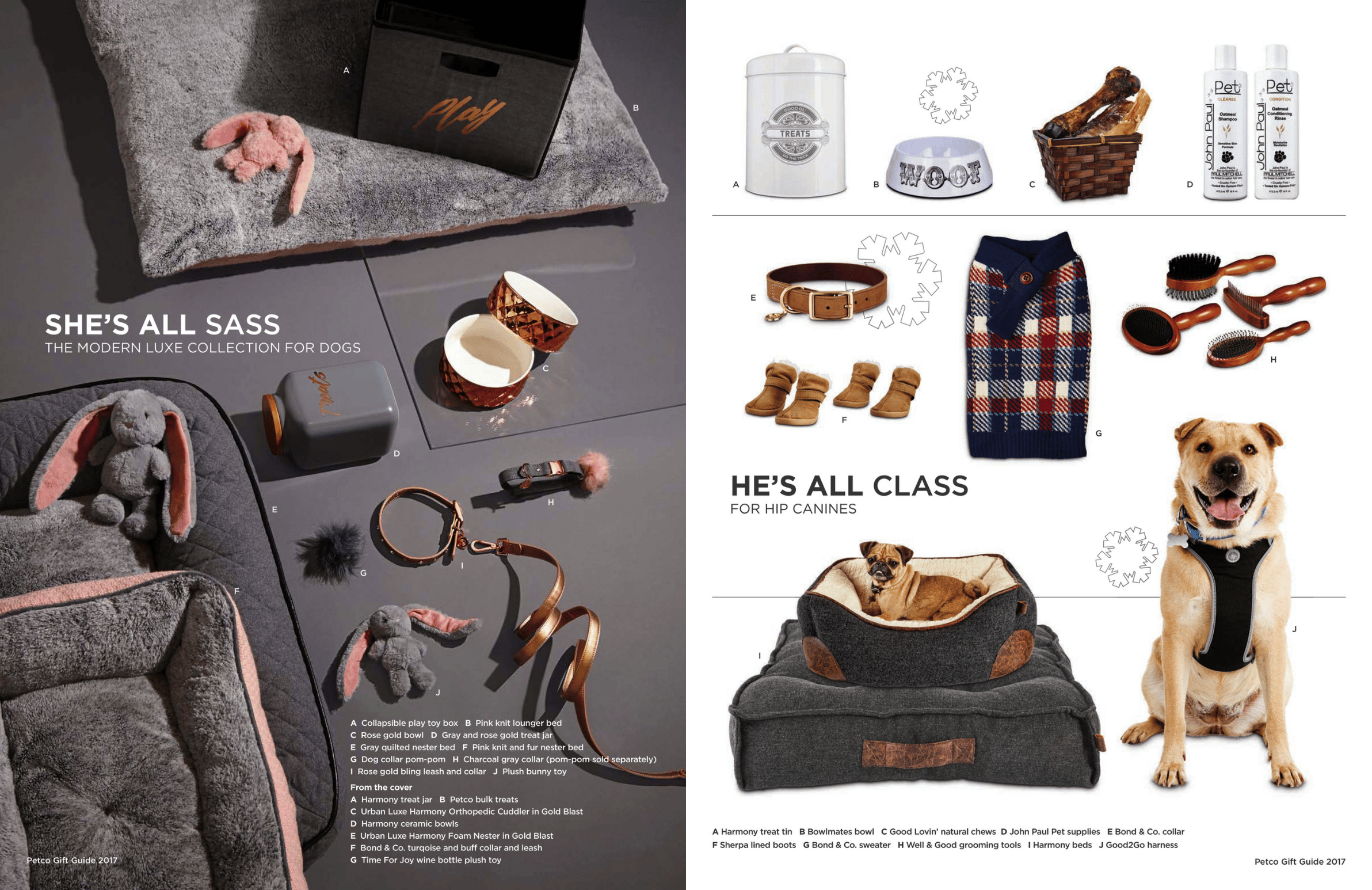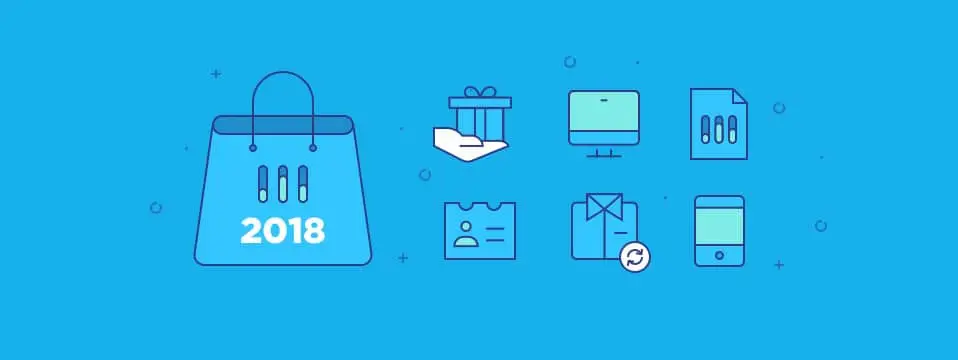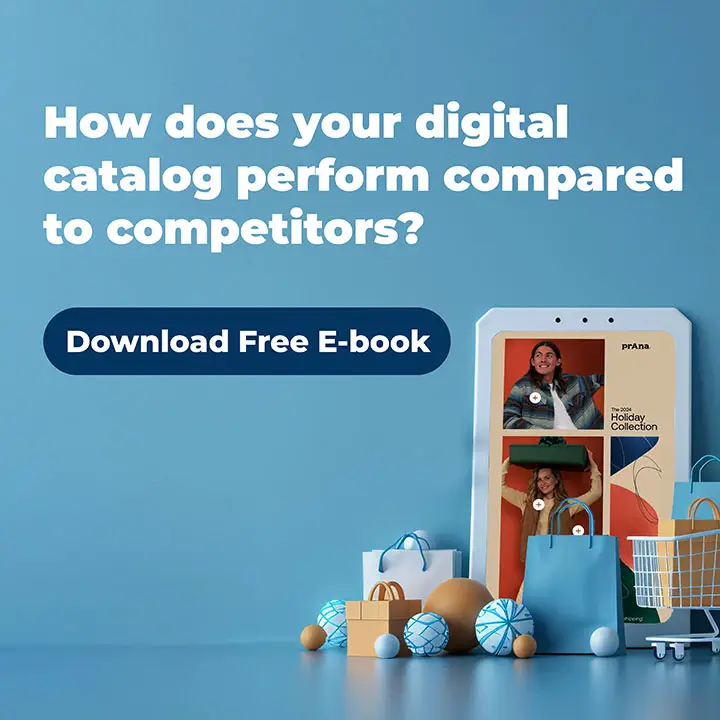Each year we get flooded with predictions about the latest retail trends [1] [2] [3], but how do they affect your online catalogs?
We reviewed many of 2018’s predictions shared by industry experts to try and answer that question. Read on to discover which trends are relevant for your online catalogs, and how you can leverage these trends to your benefit.
What’s in this post?
- Play into the growing demand for “cherish” shopping
- Facilitate “seeing is buying”
- Set your catalogs up to gain insights and make data-driven decisions
- Increase relevance through curated collections & personalization
- Stay competitive with dynamic pricing
- Deliver a great mobile catalog experience
1. Play into the growing demand for “cherish” shopping
People often shop because they have to. For example, as I’m writing this post, I’m dreadfully aware that I’m almost out of coffee pods. Better get to the store and restock!
This type of “chore” shopping will become easier and more streamlined in 2018. Think auto-renewals, subscriptions or one-tap purchases. Meanwhile, they highlight the other side of the coin—a growing demand for “cherish” shopping:
“The demand for cherish retail will be stronger than ever. [This] experiential side of retail—the part that involves discovering great products and socializing with others—won’t be going away. People will still make their way to physical stores.”
Similar predictions are made by The National Retail Federation:
“From self-service product discovery tools to augmented experiences and in-the-moment connectivity, brands are adopting innovative solutions to enhance the human element across all channels.”
It’s product discovery as well as the bridge towards physical stores where the online catalog can play an important part. Best described by the ROPO-effect (research online, purchase offline).
Instead of seeing the online catalog purely as a transactional medium, you can look at your catalog as a tool for inspiration and discovery. The aim is not always to sell now, but rather, to make sure you stay top-of-mind when potential customers go shopping (online or offline).

If your catalog provides a positive experience, shoppers might remember you when they’re looking to make a purchase. For example, The Museum of Modern Art measured the effect of their catalog by comparing catalog audience vs. audience that did not see the catalog:
“MoMA Store visitors that have first visited the catalog and then clicked through to the website have a 40% to 308% higher conversion rate than visitors from other channels.”
This shows how a catalog can add value through inspiration and nurturing your shoppers for a purchase later down the line.
2. Facilitate “seeing is buying”
More and more shoppers end up on retail sites after discovering awesome products on platforms like Instagram. Joris Schoonis from Salesforce predicts that this trend will rise.
Since the article is in Dutch, I’ll describe the point he’s raising. Shoppers often view platforms like Instagram on their smartphone, and with payment apps such as Google Pay and Apple Pay, the customer journey on mobile devices is significantly shortened. According to Joris, people are developing the sense of being able to buy what they see: “I saw it on Instagram, now it’s mine.”.
When looking at traditional catalogs and the ROPO-effect, there’s actually a rather long road between product discovery and purchase. Shoppers have to make an active decision to go to your (online) store, find the product they are looking for, and make the purchase. That’s fine if you’re just looking to inspire your customers, but there’s nothing wrong with offering a shortcut.
With the online catalog, you can provide an immediate path to conversion. Just open the catalog below and click any of the products for example:
While product discovery and inspiration are the primary goals of your catalog, it’s definitely a powerful tool to give shoppers the option to buy what they see. It allows you to guide shoppers from inspiration to purchase a lot faster.
3. Set your catalogs up to gain insights and make data-driven decisions
Data-driven decision making has been a hot topic in many retail trend predictions for several years. This year is no exception:
“Forward-thinking retailers will keep exploring ways to collect and leverage data in their sales, marketing, customer service, and operations.”
— 2018 Retail Trend Predictions, Vend
“Data analytics for most brands will emerge as one of the largest investments for retailers in 2018.”
— Shelley E. Kohan, Retail Fellows RetailNext and Assistant Professor Fashion Institute of Technology
The online catalog plays into this development particularly well. It’s easy to see that an online catalog can be measured more easily than the traditional paper catalog, giving you unique insights into how your catalog is used.
What’s more interesting is that several of our retail customers mention that the online catalog is one of their top viewed pieces of content. The high time spent, pages viewed and products clicked make online catalogs a valuable tool to gather data and discover what products your customers are interested in.
You can use this data to remarket to shoppers, optimize your product mix on other marketing channels and ultimately, help you make better data-driven decisions.
If you’re not yet doing so, we advice you to start measuring the performance of your online catalogs as soon as possible. Read more here.
4. Increase relevance through curated collections & personalization
Another hot topic inherited from 2017 is personalization. It’s found in most of this year’s trend lists, and it’s easy to see why: shoppers that clicked personalized recommendations are 4.5 times more likely to create a shopping cart.
An interesting swing on personalization is the trend known as “curated commerce” or “curated collections”:
“Customers have come to expect tailored services and personal experiences. To meet this need, more traditional brands are delivering an offering typically used by emerging brands—subscription services. Providing a new avenue for product discovery, brands are able to respond to the desire for curated offerings while accessing greater data on customers and their product interactions.”
— 2018 Retail Trends Report, The National Retail Federation
“Modern shoppers are inundated with product choices, and at the end of the day, many will choose to buy from category experts with inspiring collections.”
— 2018 Retail Trend Predictions, Vend
At the core here is that shoppers these days are overwhelmed by choice. They have developed a desire for curated product suggestions, so that they can pick the best option out of an inspiring and relevant collection.
The catalog is great tool to deliver on that desire. Instead of displaying your entire product inventory, you can display a hand-picked combination of products to guide shoppers in their purchasing decision. The gift guide is a perfect example of this:

By combining curated collections with further personalization, you can use online catalogs to truly cater to the unique needs of your shoppers. Best put in an interview we did with Peter Scholtes:
“The real-time flyer enables direct one-to-one flyer communication between retailers and customers. The innovative dynamic aspect makes the online flyer even more personal and relevant.”
Note: If you want to know more about adding personalized product recommendations in your online catalogs, feel free to contact us.
5. Stay competitive with dynamic pricing
Prices are constantly shifting, and shoppers are looking for the best deals. To thrive in an environment like this, a flexible pricing strategy—like dynamic pricing—can help play into commercial opportunities. By doing so, some have reported an 11% increase in revenue.
According to Jamie Merrick, this year might just be the year of dynamic pricing.
He emphasizes that before dynamic pricing, the temptation was always just to reduce prices, which might not be the right thing to do. It’s much more valuable to optimize your prices based on the current competitive landscape.
While it’s almost impossible to deploy a flexible pricing strategy through the paper catalog—our customers often mention prices have to be locked down for the duration of their flyer or catalog—the same does not have to be true for the online catalog.
With a dynamic online catalog, you can keep your prices perfectly in-sync with your online store. This gives you the freedom to keep your prices relevant.
6. Deliver a great mobile catalog experience
“The mobile device has passed laptops as the new first screen, especially for Millennials and Gen Z.”
— Shelley E. Kohan, Retail Fellows RetailNext and Assistant Professor Fashion Institute of Technology
This quote stands out to us as it aligns perfectly with our own data on mobile growth. We’ve covered this topic a few times before, but mobile traffic growth is so significant that it justifies talking about again:
Mobile friendly catalogs are a must.
If you’re already using our platform, rest assured—your catalogs function perfectly on the latest mobile devices.
With that said, we still see many online catalogs that don’t work on mobile devices. That’s 50% of potential exposure gone in one fell swoop. If you’re not using Publitas, we highly advise you to double check the mobile experience of your catalogs.
Getting into action
We hope this collection of trends gives you some insight on where you can take your online catalogs in 2018. We’re always available for advice, or to help you improve the effectiveness of your online catalogs, so feel free to contact us.


